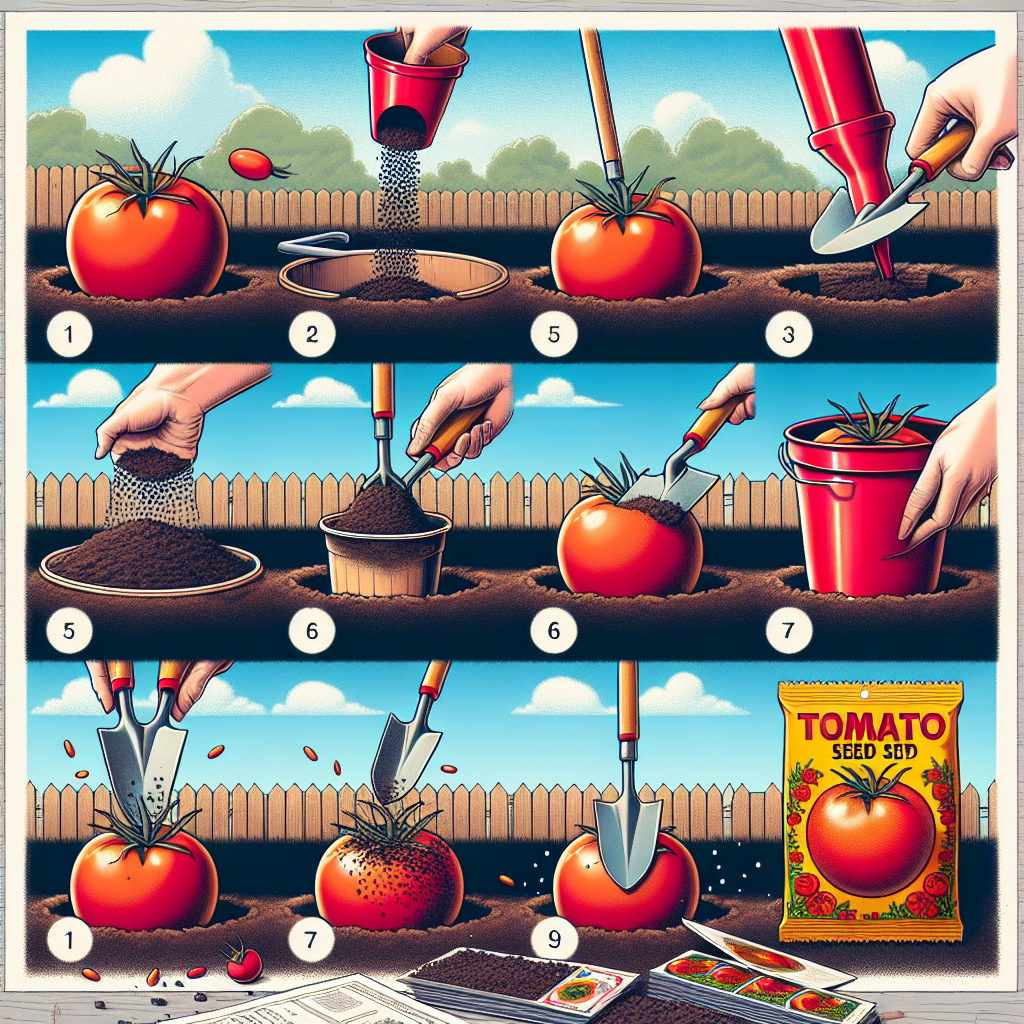
How to plant tomato seeds in the ground
The Ultimate Guide to Growing Tomatoes: How to Successfully Plant Tomato Seeds in the Ground
Tomatoes are one of the most popular and versatile vegetables in home gardens. Their vibrant color, delicious flavor, and crucial role in many cuisines make them a favorite among gardeners and chefs alike. If you're ready to reap the rewards of a bountiful tomato harvest, understanding how to plant tomato seeds in the ground is the first step. This guide will walk you through all the necessary steps, tips, and tricks to ensure a successful planting season.
The Benefits of Growing Tomatoes
Before diving into the nitty-gritty of planting, let's explore why you might want to grow tomatoes in your garden:
- Freshness: Homegrown tomatoes taste better and are fresher than store-bought varieties.
- Nutritional Value: They are packed with vitamins C and K, potassium, and folate, making them a healthy addition to your diet.
- Cost-Effective: Although initial costs for seeds and supplies exist, growing your own can save money in the long run.
- Variety: You can choose from various heirloom and hybrid varieties not typically found in stores.
When to Plant Tomato Seeds
The timing of planting is crucial for tomato success. Here’s a breakdown of when to start planting:
- **Start Indoors**: Begin by sowing your seeds indoors 6-8 weeks before the last expected frost date in your area.
- Transplanting Outdoors: After the danger of frost has passed and the soil temperature is consistently above 60°F (15°C), it's time to prepare for outdoor planting.
Preparing Your Garden
Choosing the Right Location
Tomatoes thrive in warm, sunny conditions. Here’s how to select the ideal spot in your garden:
- Sunlight: Look for a location that receives at least 6-8 hours of direct sunlight daily.
- Soil Quality: Choose well-drained, nutrient-rich soil; tomatoes prefer loamy or sandy soils.
- Protection: Ensure the area is sheltered from strong winds and extreme weather.
Soil Preparation
Well-prepared soil is essential for healthy tomato plants. Follow these steps to prepare your garden:
- Testing the Soil: Conduct a soil test to check pH levels (ideally between 6.0 and 6.8) and nutrient content.
- Amending the Soil: Based on the test results, amend your soil with organic matter such as compost or well-rotted manure.
- Tilling: Turn the soil to a depth of about 12 inches, incorporating organic matter as you work.
How to Plant Tomato Seeds in the Ground
Selecting the Right Tomato Variety
Choosing the right tomato variety is critical. Here are a few options based on growth habits:
- Determinate Varieties: These tomatoes grow to a fixed height and produce fruit all at once. Ideal for small spaces.
- Indeterminate Varieties: These continue to grow and produce for an extended period, perfect for larger gardens.
Planting Methods
Whether you are starting from seeds or seedling plants, follow these steps for successful planting:
- Seedlings Preparation: If you’ve grown your seedlings indoors, harden them off over a week by gradually introducing them to outdoor conditions.
- Digging Holes: Prepare holes in the garden, spacing them 18-24 inches apart for best growth.
- Planting Depth: When placing the seedlings in the holes, bury them deeper than they were in their containers. Tomato plants can develop roots along the buried stem, promoting stability and nutrient absorption.
- Watering Immediately: After planting, water your seedlings thoroughly to help settle the soil around the roots.
Post-Planting Care
Watering Your Tomato Plants
Watering is vital for tomato health. Here are some best practices:
- Consistency: Aim to water deeply once a week, ensuring the soil remains moist but not soggy.
- Mulching: Apply a layer of mulch around your plants to retain moisture and suppress weeds.
Nourishing Your Tomato Plants
Fertilizing is essential to promote healthy growth. Consider the following tips:
- Balanced Fertilizers: Use a fertilizer with equal parts nitrogen, phosphorus, and potassium, like a 10-10-10 NPK mix.
- Timing: Fertilize when planting and again when the plants start to bloom.
Pest and Disease Management
Common tomato pests include aphids, whiteflies, and spider mites. To manage these effectively:
- Regular Inspections: Examine your plants regularly for pests and early signs of disease.
- Organic Solutions: Consider using neem oil or insecticidal soap as a treatment for pest control.
Preparing for Harvest
It’s exciting to see your hard work transform into ripe tomatoes! Here are a few tips to recognize when your tomatoes are ready:
- Color: Look for rich color—red, pink, orange, or yellow, depending on the variety.
- Size: Ensure the tomatoes reach the standard size for that variety before harvesting.
- F firmness: Give them a gentle squeeze; ripe tomatoes will be slightly soft but still firm.
Storing and Using Your Tomatoes
Once harvested, store your tomatoes properly to maintain their flavor:
- Room Temperature: Store them at room temperature for the best taste. Refrigeration can alter texture and flavor.
- Usage: Use them in salads, pasta, sauces, and other dishes to enjoy the fruits of your labor.
Conclusion
Growing tomatoes can be a highly rewarding project, and by understanding how to plant tomato seeds in the ground, you’re one step closer to a successful gardening season. From choosing the right variety to preparing your soil and ensuring proper care, each step is essential for cultivating delicious, homegrown tomatoes. Embrace the journey and enjoy the vibrant flavors of your garden!
```By Guest, Published on October 12th, 2024